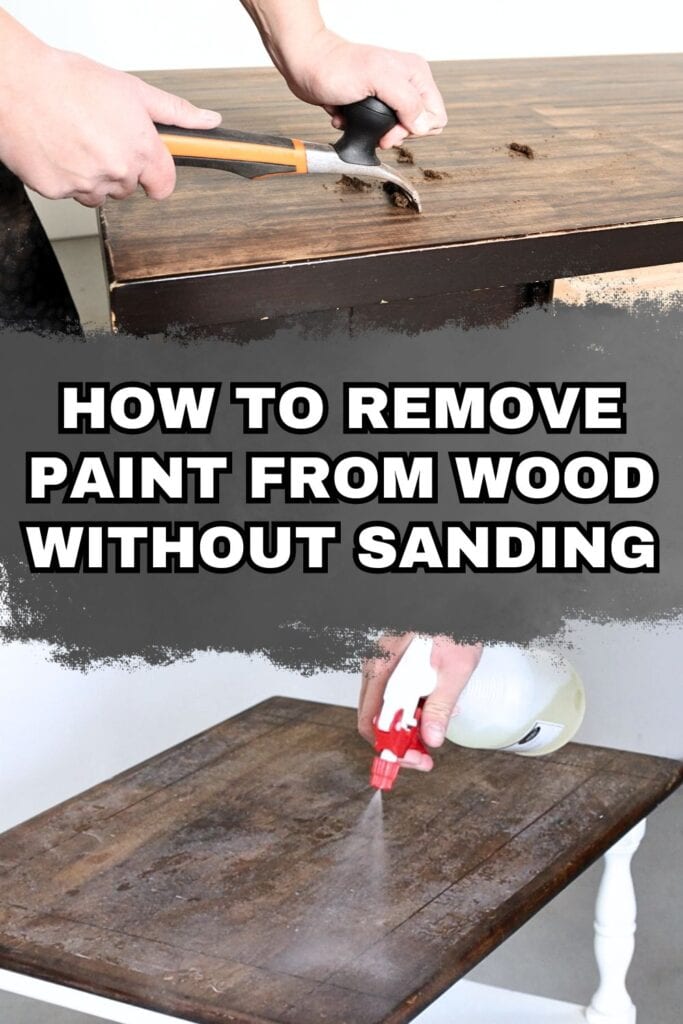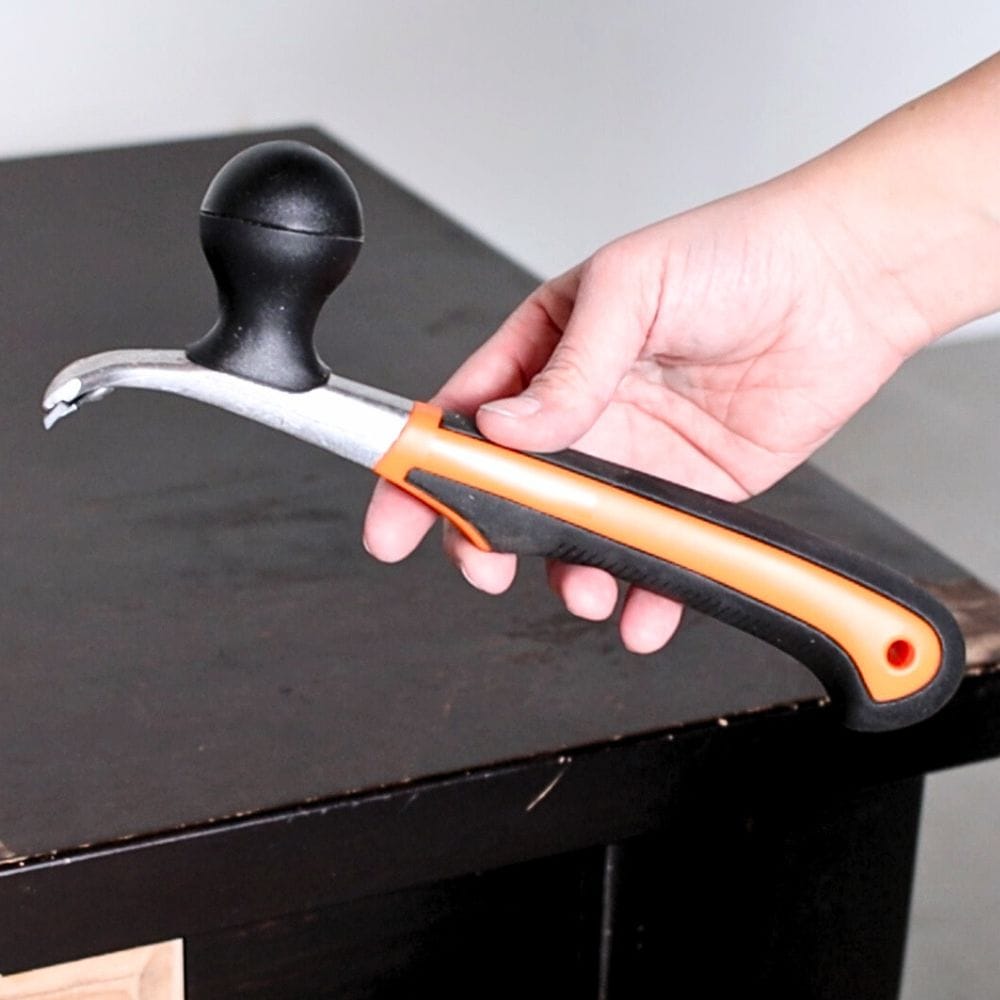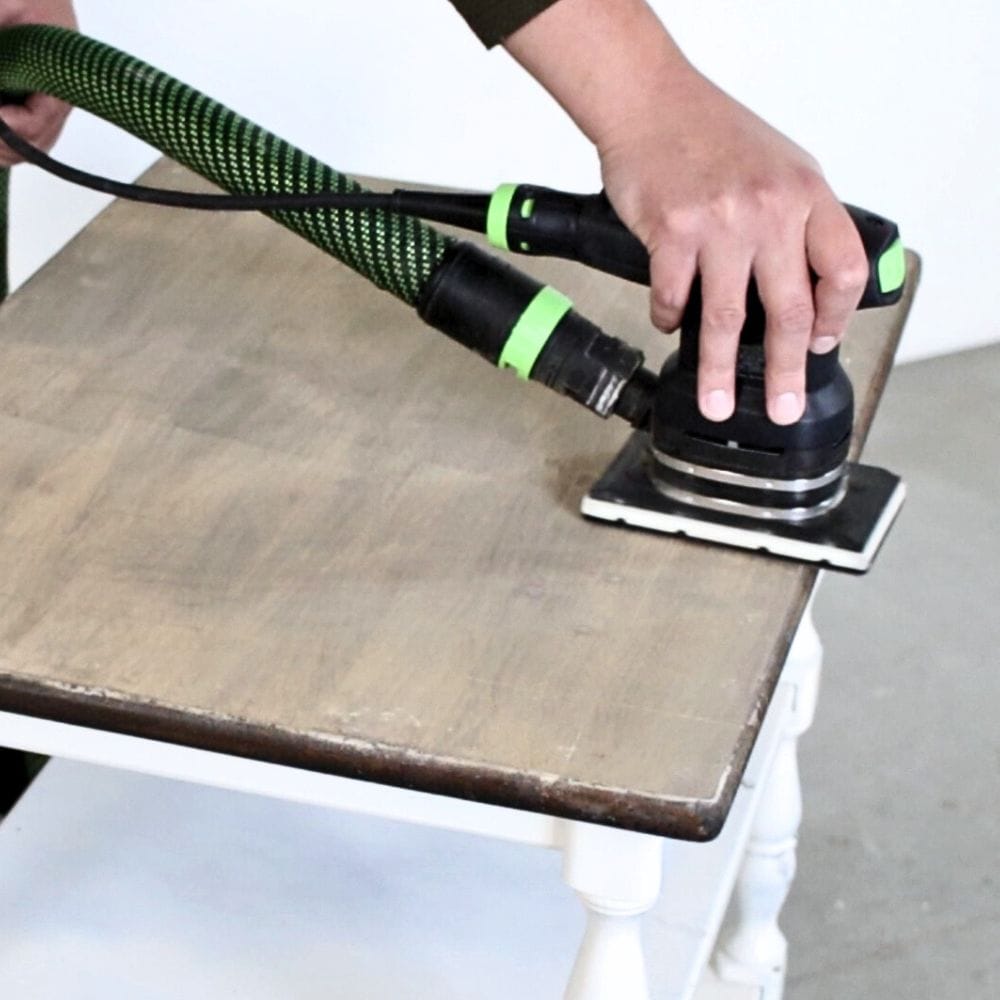How to Remove Paint from Wood Without Sanding
You may have an old piece of furniture with chipped and peeling paint, or you want to give a piece a fresh new look without the hassle of sanding. Either way, knowing how to remove paint from wood without sanding is a valuable skill to have. Luckily, with these furniture painting tools and supplies, you can easily strip away that old paint with less to no sanding required!
We will share a few options for removing paint from wood without sanding, so you can choose the method that best fits your needs.

You may need to remove the paint from the wood. Whatever your reason may be, we’ve got you covered with 2 easy and effective ways to remove paint without sanding! One is using a chemical stripper and another is using a carbide scraper. Both methods are efficient and less time-consuming compared to sanding.
Another benefit of using these methods is that they are less messy and don’t require any special equipment. Plus, you won’t have to worry about creating dust or inhaling harmful particles from sanding.
So let’s dive into the details of each method!
Using a Chemical Stripper to Remove Paint
Firstly, using a chemical stripper is a great option for removing paint from wood. It involves applying a special solution onto the painted surface and letting it sit for a certain amount of time to loosen the paint. This method works well on larger surfaces or intricate details that would be difficult to sand.
As an Amazon Associate, I earn from qualifying purchases. I also may earn from other qualifying purchases with other companies or get free product to review and use. All opinions are my own.
How to Use a Chemical Stripper
There are various chemical strippers available and we think these 3 are the best tools for removing paint from wood: Klean Strip, Citristrip, and Stripwell QCS.

Each of these strippers requires a slightly different application process due to their unique formulas. If you just want to get stain off your furniture, they also work as the best wood stain removers.
For Klean Strip, simply brush it onto the surface, wait for 15-30 minutes, then scrape away the softened stain with a putty knife. It’s quick and efficient, so it’s a great option for those who want fast results. However, be sure to take safety precautions as it is highly flammable and has strong fumes.
Citristrip is another option for those wanting to avoid harsh chemicals. It takes longer than other strippers because you’ll have to let it sit for a few hours to penetrate through the paint. If you don’t have any idea how to use this chemical stripper, here’s how to use Citristrip to strip paint from furniture!
But it is worth it for those who want a safer and more eco-friendly product. Don’t forget to remove the residue with mineral spirits or afterwash.
If you prefer a non-toxic option, Stripwell QCS is also another way to go. You just have to spray it on the surface and let it sit for 15 minutes before scraping off the stain and gunk. You can use our code SUNLIGHT10 to get 10% off your order of Stripwell QCS!

Although it may be more expensive, its unique formula doesn’t require additional cleaners to remove the gunk after stripping. Plus, it’s not flammable and safe for indoor use. Read our Stripwell QCS review to learn more on how this product works.
Remember to always follow the instructions for each specific stripper and wear protective gear when using them. And if one doesn’t work for your particular project, don’t be afraid to try another until you find the right one that works for you!
Using a Carbide Scraper to Remove Paint
An alternative method to using a chemical stripper is using a carbide scraper. This tool has a sharp blade that can work greatly if you have multiple layers of paint to deal with. Plus, it’s an inexpensive solution with no additional costs for products or cleaning supplies.

How to Use a Carbide Scraper
To use a carbide scraper, simply hold the tool at an angle and push it along the painted surface. You’ll need to steady yourself and go slowly to have complete control over the blade. Additionally, make sure to scrape in the direction of the wood grain for the best results.

This method works best on flat surfaces but can be used on more intricate details as well. Just be careful not to scrape too hard or in one spot for too long, as this may cause gouges or scratches on the wood surface.
You do have to put in some physical effort to effectively remove paint with a carbide scraper, so it may not be suitable for those with limited strength. However, for those who can manage the work, this method can be quicker and less messy than using chemical strippers.
Are carbide scrapers suitable for delicate or detailed wood surfaces?
While carbide scrapers can be used on delicate or detailed wood surfaces, it’s important to use caution and go slowly to avoid causing damage. The sharp blade of the scraper may accidentally remove small details or leave scratches on the surface if not used carefully.
If you’re unsure about using a carbide scraper on your delicate wood surface, it may be best to practice on a small and less noticeable area first. This will give you an idea of how the tool works and allow you to adjust your technique accordingly.
However, if you have intricate details that may be difficult to reach with a scraper, it may be best to use a chemical stripper instead. The solution can get into those hard-to-reach areas and loosen the paint without causing any damage.
Just be sure to choose a stripper that is safe for delicate wood surfaces and follow the instructions carefully. Even though using a chemical stripper or carbide scraper can remove most, if not all, of the paint from your wood surface, you may still have to do some very light sanding afterward.

This is especially true if there are multiple layers of paint or stubborn patches that were missed during the removal process. However, this final step should be minimal and much easier than having to sand the entire surface.
If you do need to do some light sanding, choose a fine grit sandpaper and lightly go over the surface in the direction of the wood grain. This will help smooth out any rough spots or remaining traces of paint. Remember to use gentle pressure and stop once you have removed the unwanted paint.
Whether you choose to use a chemical stripper or a carbide scraper, both methods can effectively remove paint from wood surfaces. Each option has its own benefits and it’s up to personal preference and the specific project at hand.
Just remember to always follow safety precautions when using any type of product and don’t be afraid to try different tools if one doesn’t work for you.
More Removing Paint From Furniture Tips
- How To Remove Chalk Paint Easily And Quickly
- How to Remove Paint from Wood Furniture
- Best Sandpaper For Removing Paint From Wood
Follow us on YouTube to get more tips for painting furniture.
Or share your project with us on our Facebook Group and be part of our community. See you there!
